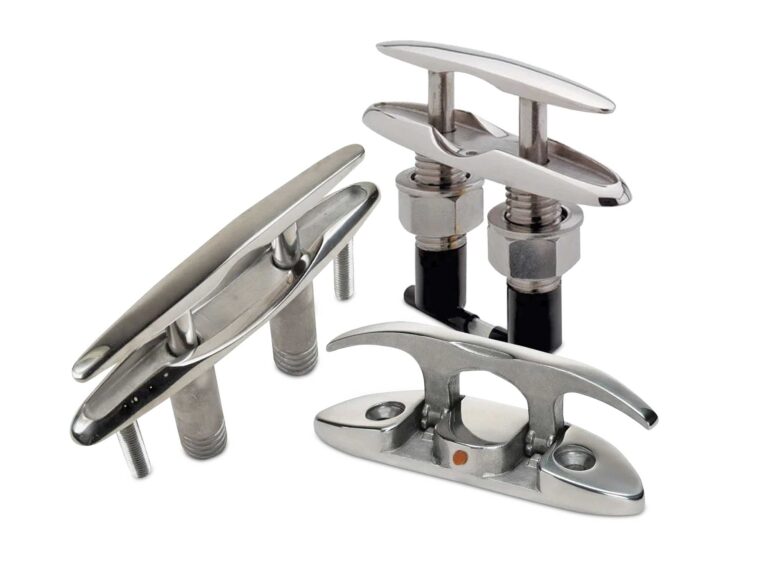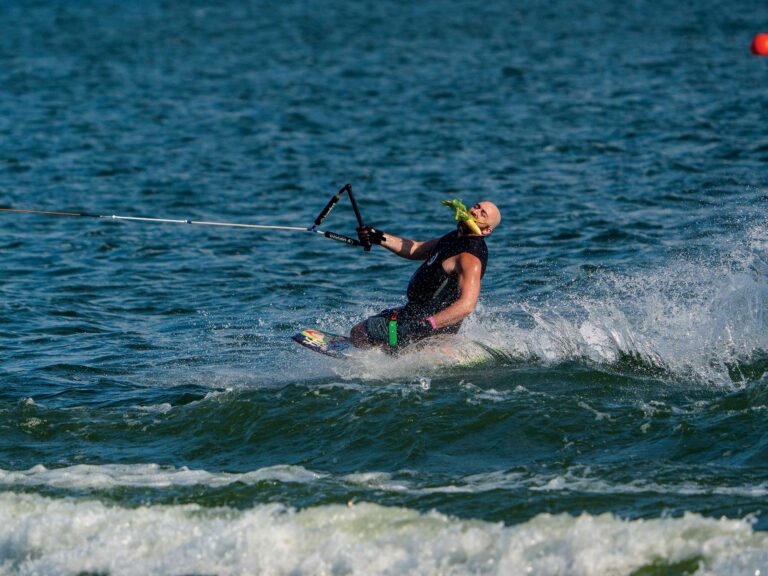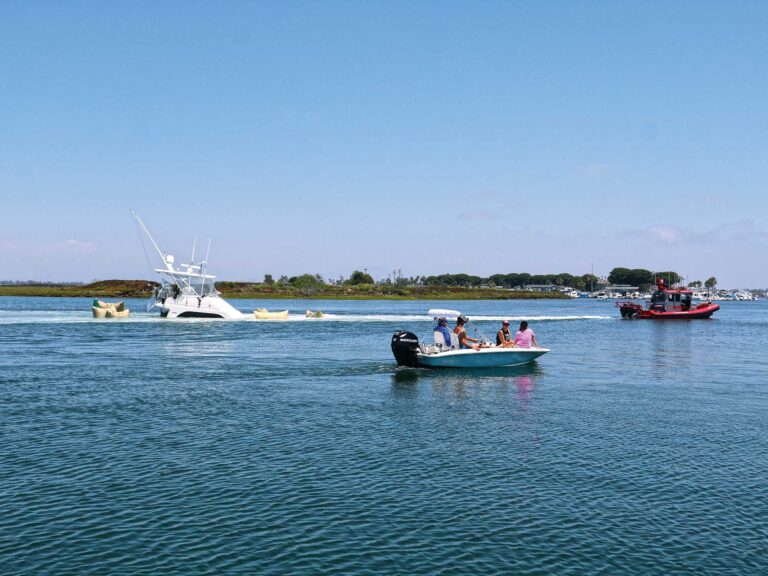Forget its light weight, easy maintenance, buildability, repairabilty, and damage resistance. It’s also economical and virtually impervious to corrosion. Forget, too, that the Coast Guard chose it as the building material for its oft-abused 47′ Motor Lifeboat, a boat that’s described by many as the strongest ever built. Aluminum-even with all it has going for it-isn’t the recreational boatbuilders’ material of choice. Why? Because we buyers don’t like the looks of it-never have.
Boaters, being no fans of change and used to the curves of wood and fiberglass, snub boxy aluminum boats because they look…well, boxy. One friend calls them floating industrial refrigerators. Our complaints have been justified in the past, but now there’s a new kid in town.
At a recent BOATING boat test rally, we came across Tracker Marine’s Tundra 18 (“Multiple Personalities,” April). It’s an aluminum alloy, deep-V multispecies fishboat that even up close looks as smooth as glass. How did it pull off this deception? We talked with the folks at Tracker Marine to find out.
Forming an Opinion. The Tundra’s hull-two bottoms, two sides, and, of course, a transom-is welded together. No big surprise. What’s interesting is that Tracker builds its boats using a process called stretch forming, which is similar to the way some aircraft and high-end automobiles are made. This is different from the more common method of fitting one flat sheet to another to form a predetermined shape. Stretch forming works by using robotic tooling and a high-grade 6000 series aluminum alloy. With these tools, hull-plating sheets are stretched around a mold to achieve desired curvature. This mold can be made of concrete, steel, fiberglass, or a combination thereof. So what are the practical applications? The advantages of stretch forming become clear when we examine the hullform, structural integrity, and appearance of the finished product.
Hull-abaloo. The stretch-forming process allows strakes and a pad to be formed into the aluminum sheet rather than being welded onto its surface. Welding causes heat distortion to the hull surface and results in a loss of hydrodynamic efficiency. The bow is positively affected during stretch forming. Because deep bow sections with reversed chines are incorporated with stretch-formed parts, these sections allow a sharper entry (more V in the keel and stem). Reversed chines deflect spray and air down, under, and away from the boat. The results? A drier ride. Lastly, the stepped, stretch-formed transom maximizes efficiency of the engine and trim.
Strong Arm Tactics. Aluminum boats are known for their strength. “Work hardening” of the aluminum skin during the stretch-forming process, especially in the areas of the deepest contours, yields even more strength than other building techniques. As marine alloy is stretched, bent, or pressed, the molecular structure aligns so that the pounds per square inch (psi) increases. The shapes that are stretch formed into the bottom, sides, bow, and transom provide stiffness to all areas.
If Looks Could Thrill. Check out the Tundra 18. Run your hand over it. Move in closer. It looks and feels like fiberglass. Stretch forming gives the boat its curves, but what about its finish? Tracker uses an automotive paint process. After completion of the hull and prior to the assembly of the interior, a high-grade acrylic polyester enamel-modified for scuff resistance-is baked on. The shell cooks at 180 degrees for 40 minutes, resulting in an excellent finish. Add to that the thick, heavy-duty rubrail, and it’s easy to think you’re looking at a boat made of fiberglass.









